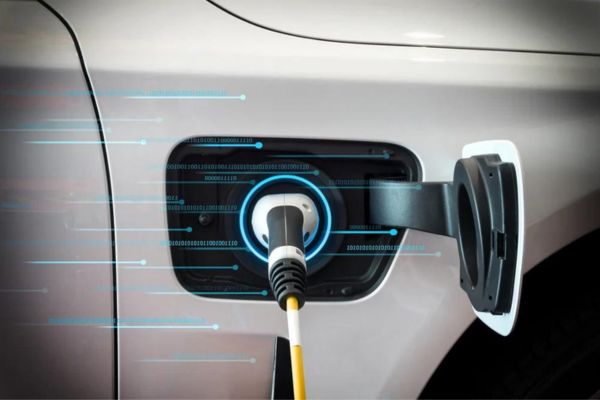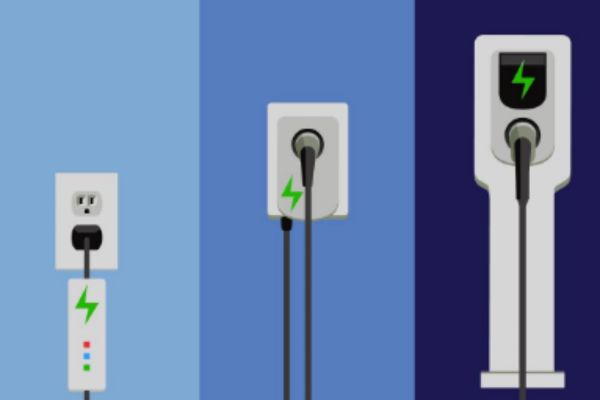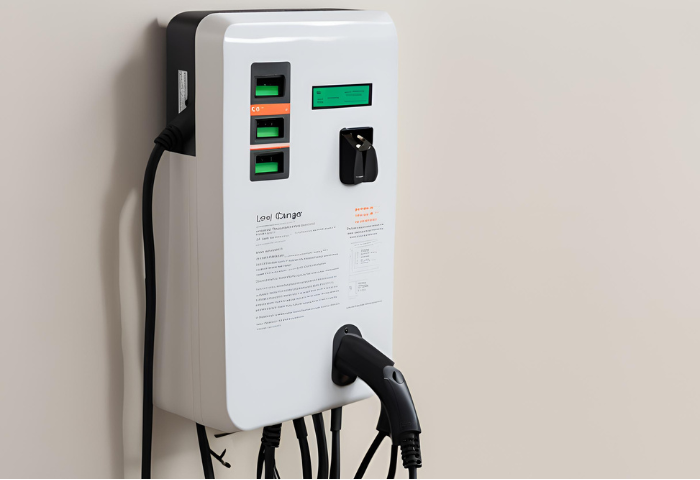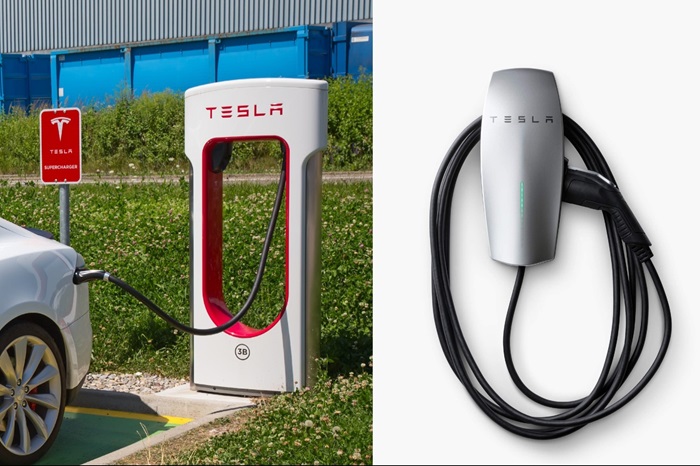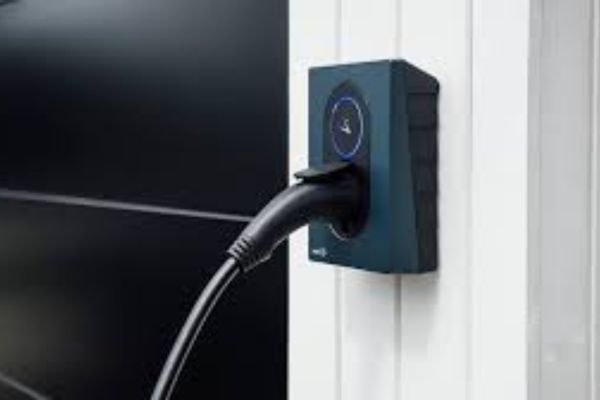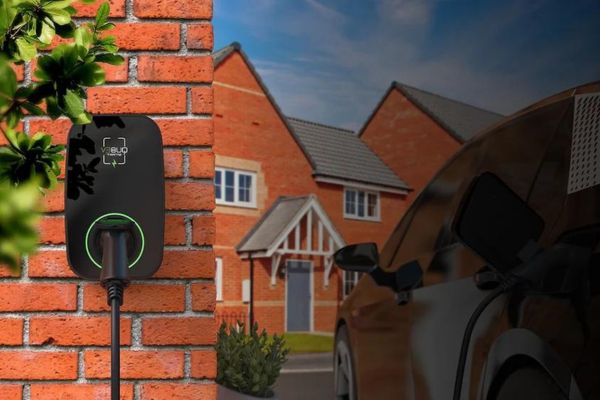How do smart EV chargers work? Insights into intelligent EV charging
Have you ever wondered, “How do smart EV chargers work?” These innovative devices are designed to optimize the charging process of electric vehicles using smart technology.
Smart electric vehicle chargers, unlike traditional chargers, have the ability to adjust charging capacity based on vehicle needs, grid capabilities, and even current electricity prices. This makes more efficient use of energy and helps extend battery life.
By integrating with home automation systems and mobile apps, smart chargers offer unlimited convenience and control, making them a smart choice for electric vehicle owners looking to maximize performance and minimize costs.
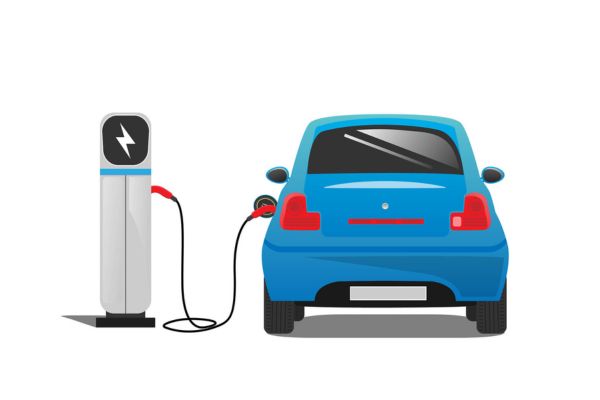
Introduction
The article provides an introduction to the evolution of electric vehicles and their charging needs.
The evolution of electric vehicles (EVs) represents one of the most significant advancements in the automotive industry. From their early conception in the 19th century to the high-tech innovations of today, EVs have transformed from niche products to mainstream modes of transportation.
The journey started with the development of the first electric carriages and vehicles, but internal combustion engine (ICE) vehicles quickly overtook them due to their longer range and quicker refueling capabilities. However, as a result of environmental concerns, advancements in battery technology, and supportive government policies, interest in electric mobility increased in the late 20th and early 21st centuries.
Modern EVs offer numerous benefits over traditional ICE vehicles, including reduced greenhouse gas emissions, lower operating costs, and the potential for integration with renewable energy sources. The adoption of EVs is crucial for achieving global sustainability goals and reducing dependence on fossil fuels. As EV technology continues to evolve, so do the infrastructure and systems required to support it, particularly in the realm of charging.
This document provides an overview and definition of smart EV chargers.
As electric vehicles become more prevalent, the need for efficient and reliable charging infrastructure has grown significantly. Traditional EV chargers are relatively simple devices that provide a steady stream of electricity to recharge a vehicle’s battery. However, the increasing number of EVs on the road, coupled with the demand for faster and more efficient charging solutions, has led to the development of smart EV chargers.
Smart EV chargers are advanced charging systems equipped with intelligent features designed to optimize the charging process. These chargers are capable of communicating with both the vehicle and the power grid, allowing for dynamic management of energy flow. Key features of smart EV chargers include:
- Connectivity and Communication: Smart chargers frequently connect to the internet or a central management system, facilitating real-time communication with both the vehicle and the grid. This connectivity allows for remote monitoring and control, as well as the ability to update software and firmware.
- Load Management: One of smart chargers’ primary benefits is their ability to manage electrical loads. Smart chargers help to prevent grid overload and reduce energy costs by adjusting the charging rate based on grid demand, time-of-use rates, and renewable energy availability.
- User Convenience: Smart chargers offer enhanced convenience for users. Features such as mobile app integration, scheduled charging, and automated billing make the charging experience more user-friendly and efficient.
- Energy Efficiency: By optimizing the charging process, smart EV chargers can improve overall energy efficiency. You can program them to charge during off-peak hours, when electricity is more affordable and environmentally friendly, thereby minimizing the environmental impact.
- Integration with Renewable Energy: You can integrate smart chargers with renewable energy sources like solar panels. This integration allows EV owners to charge their vehicles using clean energy, further enhancing the environmental benefits of electric mobility.
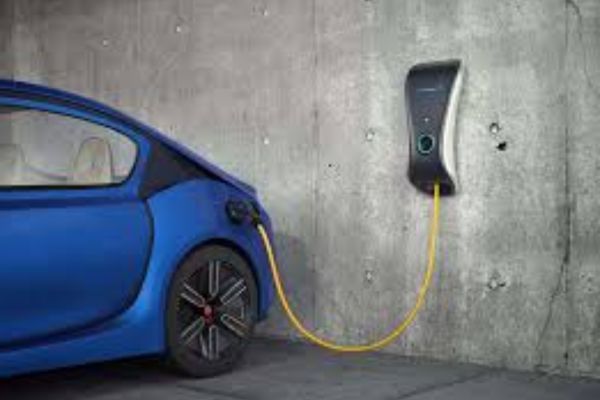
Understanding smart charging
This text provides an explanation of smart charging and its core functionalities.
Smart charging refers to an advanced method of charging electric vehicles (EVs) that optimizes the process through intelligent features and technologies. Unlike traditional charging, which involves a straightforward transfer of electricity from the grid to the vehicle, smart charging incorporates various functionalities that enhance efficiency, convenience, and sustainability. The core functionalities of smart charging are as follows:
- Dynamic Load Management: Smart chargers can adjust the charging power based on real-time conditions. This helps to balance the load on the electrical grid, preventing overloading and reducing peak demand. It guarantees the simultaneous charging of multiple EVs without jeopardizing the stability of the power supply.
- Scheduled Charging: To take advantage of lower electricity rates during off-peak hours, users can schedule their charging sessions. This not only reduces the cost for the consumer but also alleviates pressure on the grid during peak demand periods.
- Renewable Energy Integration: Smart chargers can prioritize the use of renewable energy sources, such as solar or wind power, when they are available. This feature supports the transition to greener energy and reduces the carbon footprint associated with EV charging.
- Remote Monitoring and Control: Through mobile apps or web interfaces, users can remotely monitor their charging sessions, start or stop charging, and receive notifications about the charging status. This enhances user convenience and allows for better management of charging activities.
- Energy Efficiency and Cost Savings: By optimizing the charging process, smart chargers reduce energy waste and operational costs. They can also participate in demand response programs, where EVs serve as flexible loads that can be adjusted based on grid needs, often resulting in financial incentives for the user.
How does Smart Charging differ from Traditional and Fast Charging Methods?
Traditional Charging: This involves a basic connection between the EV and the power source, typically offering a slow and steady charge without any real-time adjustments or intelligent features. It is simple and reliable but lacks the optimization capabilities of smart charging.
Fast Charging: Provides a rapid charging solution that significantly reduces the time required to charge an EV. While fast charging is convenient for quick top-ups, it can be more expensive and put greater stress on the power grid. Fast charging prioritizes speed over optimization, unlike smart charging.
Smart Charging: It combines the benefits of both traditional and fast charging by incorporating intelligent features that manage the charging process dynamically. It balances efficiency, speed, and grid stability, offering a comprehensive solution that adapts to real-time conditions and user preferences.
Technical Mechanics of Smart EV Chargers
This article describes how smart EV chargers connect to and communicate with the power grid.
Advanced communication capabilities in smart EV chargers enable them to connect and interact with the power grid. The primary components and mechanisms involved in this process are as follows:
- Internet Connectivity: Wi-Fi, Ethernet, or cellular networks connect smart chargers to the internet. This connectivity enables real-time data exchange and remote management.
- Communication Protocols: They use standard communication protocols, such as the Open Charge Point Protocol (OCPP), to interface with central management systems, utility companies, and other charging infrastructure.
- Grid Interaction: Through their connection to the power grid, smart chargers can receive signals about grid conditions, such as demand peaks, the availability of renewable energy, and electricity rates. We use this information to dynamically adjust the charging rate.
The role of software and internet connectivity in managing charging processes is significant.
Software and internet connectivity play crucial roles in the functionality of smart EV chargers.
- Central Management Systems: These systems aggregate data from multiple chargers, providing a centralized platform for monitoring, control, and optimization. They enable utilities and operators to implement demand response strategies and manage energy distribution more effectively.
- Mobile Apps and User Interfaces: Software applications allow users to interact with their smart chargers remotely. They can schedule charging sessions, monitor real-time charging status, and adjust settings based on their preferences and needs.
- Data Analytics: Smart chargers collect and analyze data on charging patterns, energy consumption, and grid conditions. We use this data to optimize charging algorithms, enhance energy efficiency, and facilitate predictive maintenance.
- Internet connectivity enables over-the-air firmware updates, enabling smart chargers to receive the latest features and security enhancements without requiring physical intervention.
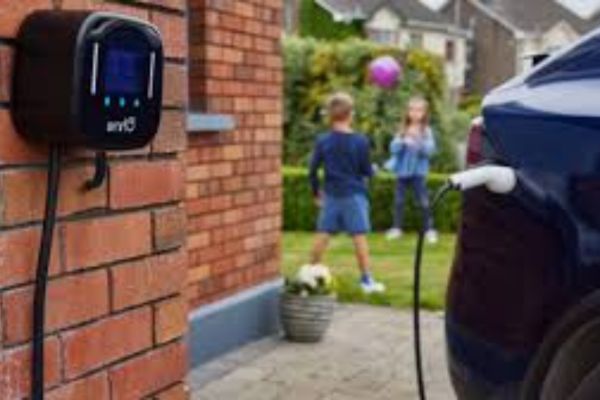
Key features of smart EV chargers
Power Sharing: Mechanisms for Distributing Power Among Multiple EVs
Power sharing is a crucial feature of smart EV chargers, designed to efficiently distribute available power among multiple vehicles simultaneously. This is particularly important in environments like apartment complexes, public charging stations, and workplaces where several EVs may need to charge at the same time. The common mechanisms for power sharing are as follows:
- Load Balancing: The smart charger assesses the total available power capacity and distributes it evenly or according to pre-set priorities among all connected vehicles. This ensures that all vehicles receive a portion of the power without overloading the electrical system.
- Priority-Based Distribution: Users or administrators can set priorities for different vehicles. For instance, you can give a higher priority to an EV with a lower battery level or one that needs to leave sooner, ensuring it receives more power than others.
- Sequential Charging: In scenarios where the power supply is limited, the charger can sequentially charge vehicles one after another. Once the first vehicle reaches a certain charge level, the charger switches to the next vehicle.
- Real-Time Monitoring and Adjustment: Smart chargers continuously monitor the charging process and make real-time adjustments to the power distribution based on the changing conditions and requirements of each connected vehicle.
Power Boost: How This Feature Provides Faster Charging During Peak Times
Power boost is a feature that allows smart EV chargers to deliver higher power levels for faster charging, especially during peak times when there is high demand for rapid charging. This is achieved through several strategies:
- When a vehicle requests a power boost, the smart charger temporarily reallocates power from other less critical loads or from charging stations that are not in use to the requesting vehicle, thereby providing a higher charging rate.
- Use of Energy Storage Systems: Some smart charging stations come with batteries or other energy storage systems that can store excess energy. This stored energy can supplement the grid power during peak times, giving the EVs a power boost.
- Grid Coordination: During peak demand periods, smart chargers can communicate with the grid to request additional power. If the grid has sufficient capacity, it can supply extra power to the charger for a temporary boost.
- Dynamic Pricing and Incentives: As a premium service, Power Boost allows users to choose to pay a higher fee for faster charging during peak times. Dynamic pricing manages this feature, encouraging users to utilize the power boost option when they require it most.
Dynamic Power Sharing: Real-Time Adjustments to Different Vehicle Power Needs
Dynamic power sharing is an advanced feature that allows smart chargers to adjust the distribution of power in real-time based on the specific needs of each connected vehicle. This ensures optimal use of available power and enhances the overall efficiency of the charging process. The key aspects include:
- Real-Time Data Collection: Smart chargers continuously collect data from each connected vehicle, including battery state of charge, charging speed preferences, and expected departure times.
- Adaptive Algorithms: Using sophisticated algorithms, the charger dynamically adjusts the power distribution to meet the varying needs of each vehicle. For example, if one vehicle reaches a desired charge level or its charging speed reduces as the battery fills, the charger reallocates the excess power to other vehicles.
- Vehicle-to-Grid (V2G) Compatibility: In systems with V2G capabilities, the charger can draw power from vehicles that are willing to supply energy back to the grid, further enhancing the flexibility and responsiveness of power distribution.
- User Preferences and Scheduling: The system allows users to input their charging preferences and schedules. Using this information, the smart charger dynamically prioritizes charging sessions to meet the needs and timelines of each vehicle’s owner.
- Integration with Renewable Energy Sources: Dynamic power sharing can also take into account the availability of renewable energy. For instance, if solar power is abundant during the day, the charger may prioritize charging vehicles more rapidly during those times, adjusting as the availability fluctuates.

Advanced Technologies in Smart Charging
Integration with Renewable Energy: Using Solar Power and Other Renewables
One of the most promising aspects of smart EV chargers is their ability to integrate with renewable energy sources, such as solar power, wind power, and other sustainable options. This integration offers multiple benefits, including reducing greenhouse gas emissions, lowering energy costs, and increasing the use of clean energy. Key components of this integration include:
- Direct Connection to Renewable Sources: You can directly connect smart chargers to solar panels or wind turbines. This setup allows EVs to charge using clean energy generated on-site, which is particularly beneficial for home charging stations and businesses with renewable energy installations.
- Energy Storage Systems: Batteries can store excess renewable energy generated during peak production times (e.g., sunny or windy periods). When renewable generation is low or during peak electricity demand, we can use this stored energy to charge EVs, ensuring a consistent and sustainable energy supply.
- Smart Grid Communication: Smart chargers can communicate with the power grid. When renewable energy is abundant, the grid can signal the chargers to increase their activity, maximizing the use of clean energy. Conversely, during times of low renewable production, the chargers can reduce their power draw or switch to stored energy.
- Dynamic Energy Management: Advanced algorithms in smart chargers can optimize the use of available renewable energy. By balancing the charging needs of multiple vehicles with the real-time availability of renewable energy, they ensure efficient use of the maximum amount of clean energy.
Vehicle-to-Grid (V2G) Technology: Enabling EVs to Return Energy to the Grid
Vehicle-to-Grid (V2G) technology is a transformative feature of smart charging that allows EVs to not only draw power from the grid but also return excess energy back to it. This bidirectional flow of electricity offers several advantages:
- Grid Stabilization: V2G technology helps stabilize the power grid by providing additional power during peak demand periods. EVs can discharge stored energy back to the grid, helping to balance supply and demand and prevent blackouts.
- Energy arbitrage: EV owners can take advantage of time-of-use pricing by charging their vehicles when electricity prices are low and selling excess energy back to the grid when prices are high. This practice, known as energy arbitrage, can lead to significant cost savings for EV owners.
- Support for Renewable Integration: V2G technology enhances the integration of renewable energy into the grid. By storing excess renewable energy in EV batteries and discharging it when needed, V2G helps mitigate the intermittent nature of renewable sources like solar and wind.
- Emergency Backup Power: If there is a power outage, V2G-enabled EVs can provide backup power to homes or critical infrastructure. This capability adds an extra layer of resilience and security to the energy system.
Battery Health Monitoring: Techniques to Prolong Battery Life and Performance
Maintaining the health and performance of EV batteries is crucial for ensuring their longevity and reliability. To achieve this goal, smart chargers use advanced battery health monitoring techniques.
- State of Charge (SoC) Management: Smart chargers can monitor and manage the battery’s charge state to avoid overcharging or deep discharging, both of which can degrade battery health over time. Maintaining the battery within an optimal SoC range prolongs its lifespan.
- Temperature Control: Batteries perform best within specific temperature ranges. Smart chargers can monitor battery temperature and adjust charging rates to prevent overheating or excessive cooling. Thermal management systems integrate with some systems to actively regulate battery temperature.
- Charge Rate Optimization: High-speed charging can generate heat and stress the battery. Smart chargers optimize the charge rate based on battery health data, reducing the charge speed when necessary to minimize wear and tear on the battery cells.
- Battery Diagnostics: We conduct regular diagnostics to assess the health of the battery. Smart chargers can detect issues such as cell imbalances or capacity degradation early on, allowing for preventive maintenance or timely intervention.
- User Education and Feedback: Smart chargers often provide users with insights and recommendations on best practices for battery maintenance. This feedback can include suggestions on ideal charging patterns, avoiding extreme temperatures, and periodic full charge and discharge cycles to recalibrate the battery management system.
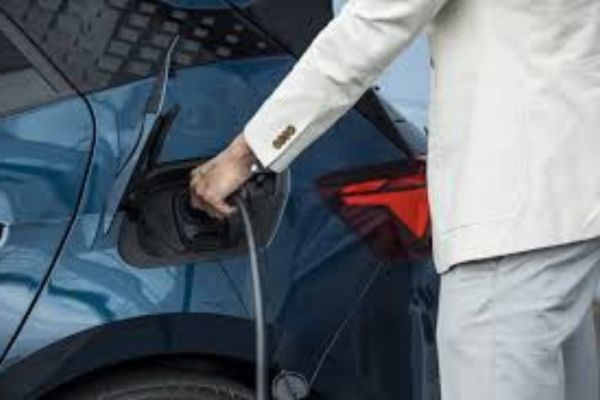
User Interface and Experience
The importance of user-friendly interfaces
User-friendly interfaces are crucial for the widespread adoption and effective use of smart EV chargers. An intuitive and accessible interface ensures that users can easily understand and operate the charging system, leading to a more satisfying and efficient experience. Key aspects of user-friendly interfaces include:
- Ease of Use: Simple, clear, and intuitive controls allow users of all technical skill levels to operate the charger without confusion. This reduces the learning curve and minimizes the risk of errors.
- Clear Information Display: Users should clearly and prominently display essential information such as charging status, time remaining, energy usage, and cost. This transparency helps users make informed decisions about their charging sessions.
- Interactive Features: Touchscreen interfaces and voice controls can enhance user interaction by making it easier to navigate menus, set preferences, and manage charging sessions.
- Accessibility: We should design interfaces to accommodate users with disabilities, ensuring that everyone can access and use smart charging features without any barriers.
- Aesthetic Appeal: A visually appealing design can enhance the overall user experience, making the charging process not only functional but also pleasant.
The benefits of integrating mobile apps for enhanced user interaction are numerous.
Mobile app integrations bring significant benefits to the user experience of smart EV chargers by offering enhanced control, convenience, and personalization. Key benefits include:
- Remote Control and Monitoring: Mobile apps allow users to start, stop, and monitor their charging sessions from anywhere. This remote access provides flexibility and peace of mind, as users can check the status of their EVs without being physically present.
- Scheduling and Notifications: Users can schedule charging sessions to take advantage of off-peak electricity rates or renewable energy availability. Apps can also send notifications about charging completion, errors, or changes in electricity prices, keeping users informed in real-time.
- Personalized Settings: Mobile apps enable users to set preferences such as preferred charging times, maximum charge levels, and notifications. This customization helps optimize the charging process according to individual needs and schedules.
- Payment and Billing Management: Apps can integrate payment systems for seamless transactions, allowing users to pay for charging sessions directly through the app. They can also provide detailed billing statements and usage reports, helping users track their expenses and energy consumption.
- Integration with Smart Home Systems: Mobile apps can link with smart home ecosystems, enabling coordinated management of home energy use. For instance, the app can optimize charging based on overall household energy consumption or integrate with home solar systems.
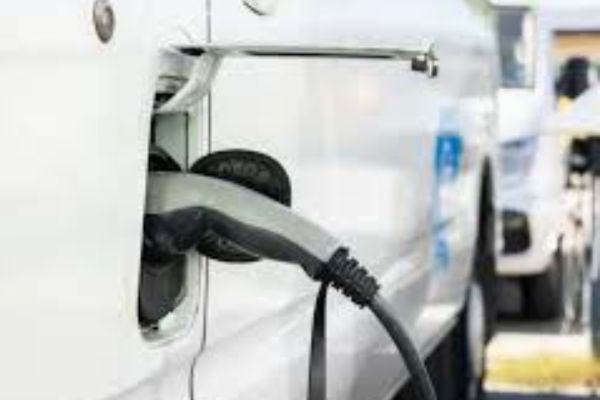
Economic and social impact
The impact on local and national electricity grids is significant.
The adoption of smart EV charging has significant implications for local and national electricity grids, both positive and challenging.
- Grid Stability and Load Management: By managing charging loads dynamically, smart chargers help balance electricity demand. This prevents grid overload during peak times and supports more stable grid operations.
- Enhanced Grid Efficiency: By facilitating the integration of renewable energy and supporting demand response programs, smart chargers improve overall grid efficiency. They enable better utilization of renewable sources and reduce reliance on fossil fuels.
- Infrastructure Investments: The widespread adoption of EVs and smart chargers necessitates upgrades to grid infrastructure, including increased capacity and improved transmission networks. This can lead to significant investments, but it can also stimulate economic growth and job creation in the energy sector.
- Peak Shaving and Valley Filling: Smart charging can shift energy consumption from peak to off-peak hours, a process known as peak shaving and valley filling. This optimizes energy use, reduces peak demand charges, and lowers overall energy costs for consumers and utilities.
- Vehicle-to-Grid (V2G) Contributions: V2G technology allows EVs to supply power back to the grid, acting as distributed energy resources. This can provide additional capacity during high-demand periods and enhance grid resilience.
The government is offering incentives and rebates for the adoption of smart EV charging.
Governments around the world are offering various incentives and rebates to encourage the adoption of smart EV charging, recognizing its benefits for energy efficiency and environmental sustainability. Key incentives include:
- Many governments provide financial rebates or tax credits for the purchase and installation of smart EV chargers. These incentives reduce the initial cost burden for consumers and businesses, making smart charging more accessible.
- Subsidies for Infrastructure Development: Governments may offer incentives to support the development of public charging infrastructure, including smart chargers. This helps expand the charging network, making EV adoption more convenient for drivers.
- Research and Development Grants: Funding for R&D projects related to smart charging technologies can accelerate innovation and bring advanced features to market more quickly.
- Some regions implement time-of-use pricing schemes that encourage EV owners to charge during off-peak hours, aligning with the benefits of smart charging. These programs can include discounted rates for off-peak charging.
- Mandates and Regulations: Governments may set regulations requiring new buildings or major renovations to include EV charging infrastructure. This promotes the integration of smart charging capabilities into new developments.
- Public awareness campaigns: Initiatives to educate the public about the benefits of smart EV charging and available incentives can drive higher adoption rates and support broader environmental goals.
The installation and practical applications of smart EV chargers are currently underway.
Smart EV chargers offer a convenient and efficient way to charge your electric vehicle (EV) at home, but installation requires careful consideration. Here’s a breakdown:
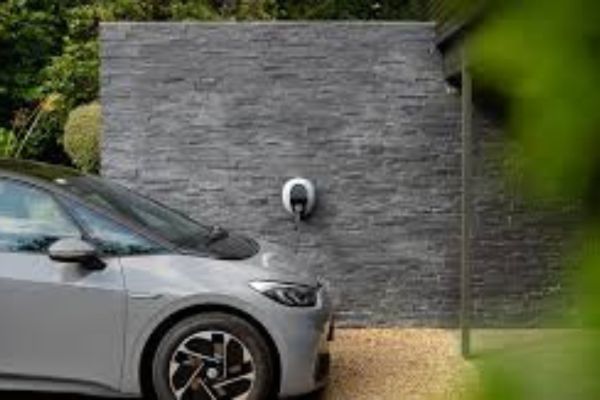
Guidelines for home installation
- Electrical Capacity Assessment: This is crucial. A qualified electrician can evaluate your existing electrical panel to determine if it has the capacity to handle the additional load of a smart charger. Upgrading the panel might be necessary in some cases.
- Location Selection: For easy charging access, choose a spot near your designated parking area. Remember to consider the distance from the electrical panel in order to minimize cable runs and associated costs. Local regulations regarding outdoor charger placement might also come into play.
- Permits and Regulations: Check with your local building department to see if any permits are required for installing a smart charger in your area.
Professional Installation vs. Do-It-Yourself (DIY)
Despite the fact that some smart charger models promote DIY installation, we generally advise hiring a licensed electrician for the following reasons:
- Electrical Expertise: Working with high-voltage electricity can be dangerous. A qualified electrician has the knowledge and experience to ensure a safe and code-compliant installation.
- Circuit Breaker Installation: Smart chargers often require a dedicated circuit breaker in your electrical panel. We train and equip electricians to safely handle this.
- Some charger manufacturers may void their warranties if a professional installs the device.
Safety First
When it comes to electrical work, prioritizing safety is paramount. While some homeowners might be comfortable with basic electrical tasks, smart charger installation typically involves complex wiring and potential high-voltage situations. Consulting a licensed electrician ensures a safe and reliable charging setup for your EV.
Security Aspects
Data security: safeguarding user data and preventing unauthorized access
Smart EV chargers collect and transmit data related to charging sessions, user preferences, and sometimes personal information. Ensuring the security of this data is crucial.
- Encryption: All data transmitted between the charger, the vehicle, and the user’s mobile app should be encrypted to prevent interception by unauthorized parties.
- Secure Authentication: Implement strong authentication methods, such as multi-factor authentication (MFA), to ensure that only authorized users can access the charger’s settings and data.
- Manufacturers should provide regular firmware and software updates to address security vulnerabilities and enhance protection against new threats.
- Data Anonymization: To protect user privacy, anonymize personal data whenever possible.
- Compliance with Standards: Ensure that the smart charger complies with relevant data protection regulations and standards, such as GDPR for European users or CCPA for California residents.
Physical Security: Measures to Protect Chargers from Physical Damage and Theft
Protecting the physical integrity of smart EV chargers is also important to prevent damage, theft, and vandalism.
- Durable Construction: Opt for chargers constructed from sturdy materials, capable of withstanding a range of environmental conditions such as rain, snow, and extreme temperatures.
- Secure Mounting: To prevent easy removal or tampering, secure the charger to a wall or a sturdy pedestal. Use tamper-proof screws and bolts.
- Lockable Units: Some chargers come with locking mechanisms to secure the charging cable and prevent unauthorized use. Make sure to use these locks consistently.
- Surveillance and Lighting: If possible, install the charger in a well-lit area with surveillance cameras. Visible security measures can deter potential thieves or vandals.
- Alarms and Alerts: Some smart chargers come equipped with built-in alarms that sound when someone tampers with the unit. Additionally, if they detect any unusual activity, they can send alerts to the user’s mobile app.
- Insurance: Consider protecting the charger from theft and damage. This can provide financial protection in the event of unforeseen incidents.
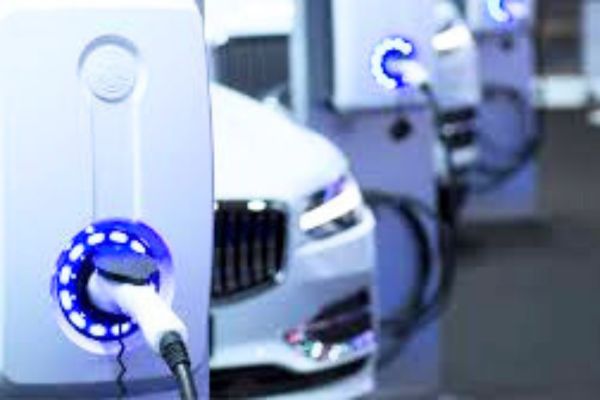
The advantages of smart EV chargers
Efficient energy management leads to cost savings.
Smart EV chargers can take advantage of dynamic pricing schemes offered by utility companies. By charging during off-peak hours, when electricity rates are lower, users can significantly reduce their energy costs.
Load Balancing: These chargers can optimize energy distribution within a household or facility, ensuring that the EV charging process does not exceed the available electrical capacity, thereby avoiding costly infrastructure upgrades or penalties for exceeding energy limits.
Energy Storage Integration: By integrating smart chargers with home energy storage systems (like batteries), users can store energy when it’s cheap or comes from renewable sources (like solar panels), then use it later for EV charging to further reduce costs.
Environmental Benefits of Reducing Carbon Emissions
Renewable Energy Utilization: You can program smart EV chargers to use electricity from renewable sources to charge vehicles. For example, they can sync with solar panel systems to charge the vehicle during peak solar production times, reducing reliance on fossil fuels.
Grid Demand Management: Smart chargers balance the load on the electrical grid by controlling the timing and method of EV charging, thereby reducing the need for additional fossil fuel-based power generation during peak times.
Reduced Idle Charging: By automatically stopping the charging process when the vehicle’s battery reaches full charge, these chargers prevent wasteful energy use and lessen the overall carbon footprint.
Convenience through features like scheduling and remote control
Scheduling: Users can set specific times for their EVs to charge, ensuring that charging occurs during off-peak hours or when renewable energy is most available. This not only saves costs but also ensures the vehicle is ready when needed.
Remote Control and Monitoring: Through mobile apps and online platforms, users can remotely monitor their charging status, start or stop the charging process, and receive notifications about the charging progress. This adds a layer of convenience, allowing users to manage their EV charging from anywhere.
Smart EV chargers can seamlessly interact with other smart devices and home automation systems when integrated into broader smart home systems. For instance, you can program them to initiate charging when other devices with high energy consumption are not in use, thereby optimizing overall energy consumption.
Smart EV chargers not only provide financial and environmental benefits but also enhance the overall user experience with their advanced features and convenience.
The regulatory and market considerations for smart EV chargers are significant.
Current Regulations
The regulatory landscape for smart EV chargers is still evolving, but here are some key points to consider:
- Safety Standards: There are international safety standards that smart chargers must comply with, ensuring safe operation and preventing electrical hazards. Examples include IEC 61851 and UL 2580.
- Interoperability: Regulations might encourage or mandate compatibility with specific communication protocols to ensure different chargers and EVs can interact seamlessly. This promotes a more standardized and future-proof charging infrastructure.
- Data Privacy: As smart chargers collect data on charging habits and energy usage, regulations might address data security and user privacy concerns.
Future Trends and Innovations
The smart charging market is brimming with exciting possibilities.
- Bi-Directional Charging (V2X): This technology allows EVs to not only receive but also feed power back to the grid, potentially creating a more dynamic and efficient energy ecosystem.
- Smart Grid Integration: Advancements in communication and control systems will enable even closer integration between smart chargers and the power grid, optimizing energy flow and grid stability.
- Machine learning and AI: Smart chargers might leverage machine learning to predict energy usage patterns and optimize charging schedules for individual users and even entire communities.
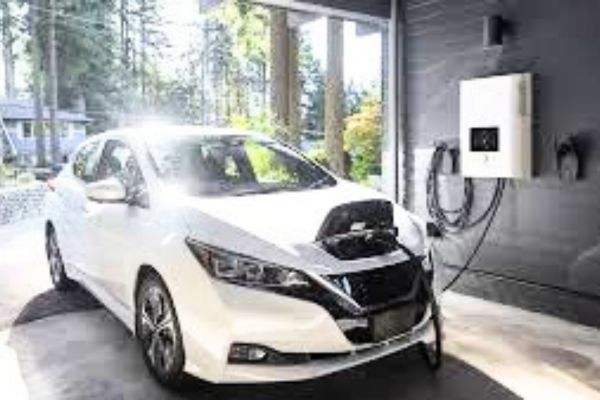
Real-World Applications and Case Studies
Examples of Smart Charging Implementation
Businesses: Companies are installing smart chargers in their parking lots to attract environmentally conscious customers and employees who own EVs. Fleet management companies are also utilizing smart charging to optimize charging schedules for electric delivery vehicles.
Cities: Municipalities are investing in smart charging infrastructure to promote EV adoption and reduce emissions. This can involve installing public charging stations with smart features and offering incentives for residents to install smart chargers at home.
Challenges and Solutions
Grid Infrastructure Upgrade: The current grid might not be able to handle a surge in EV charging demand. Solutions involve upgrading grid capacity, integrating renewable energy sources, and implementing smart grid technologies.
Cost of Smart Chargers: Compared to traditional chargers, smart chargers can be more expensive. We expect government incentives, subsidies, and economies of scale to reduce costs as adoption increases.
Standardization and Interoperability: A lack of universal standards can create compatibility issues between chargers and EVs. Industry collaboration and regulatory efforts are working towards establishing clear standards.
By addressing these challenges and capitalizing on emerging technologies, smart charging has the potential to revolutionize the way we power our electric vehicles, paving the way for a more sustainable and efficient transportation future.
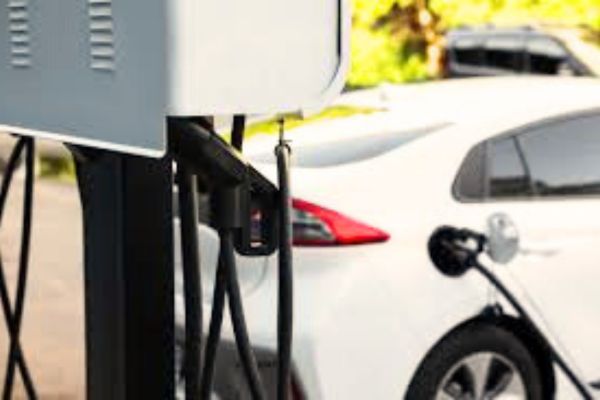
The Future of Smart EV Charging
Emerging Technologies and Potential Market Developments
- Vehicle-to-Grid (V2G) Technology: This technology has the potential to transform the relationship between electric vehicles (EVs) and the power grid. This technology enables EVs to not only draw power from the grid but also to return surplus energy back to it, providing additional storage capacity and enhancing grid stability. As V2G technology matures, it will play a critical role in balancing energy supply and demand, particularly with the increasing penetration of renewable energy sources.
- Wireless Charging: Inductive charging technology, which allows EVs to charge without physical connections, is advancing rapidly. This technology offers significant convenience and has the potential to enable dynamic charging on the go, where vehicles can charge while moving, reducing downtime and increasing efficiency.
- Advanced Energy Management Systems: Future smart chargers will integrate with sophisticated energy management systems that leverage AI and machine learning. These systems will optimize charging schedules based on real-time data, user preferences, and grid conditions, maximizing the use of renewable energy and minimizing costs.
- Blockchain for Energy Transactions: Blockchain technology could facilitate secure and transparent energy transactions between EV owners, charging stations, and grid operators. This decentralized approach can enhance trust and efficiency in energy markets, particularly for V2G transactions.
- Ultra-Fast Charging: The development of ultra-fast charging technology will significantly reduce the time required to charge EVs. Combined with smart charging features, this will make EVs even more convenient and appealing to consumers, further driving adoption.
The report focuses on global trends in the adoption and impact of smart chargers.
- Widespread Adoption: Governments around the world are implementing policies and incentives to promote the adoption of EVs and smart charging infrastructure. Europe, China, and the United States are leading the charge with substantial investments in EV infrastructure and stringent emissions regulations.
- Integration with Renewable Energy: There is a growing emphasis on integrating smart chargers with renewable energy sources. Countries with significant renewable energy investments, such as Germany and Denmark, are exploring ways to maximize the use of wind and solar power for EV charging.
- Urbanization and Smart Cities: The development of smart cities is driving the deployment of smart EV chargers. Urban areas are increasingly focusing on sustainable transportation solutions, and smart charging infrastructure is a key component of this strategy.
- Corporate Adoption: Businesses are adopting smart EV chargers as part of their sustainability initiatives. Companies like Amazon, Google, and IKEA are installing smart chargers at their facilities to support employee EV adoption and reduce their carbon footprints.
Conclusion
Smart EV chargers represent a critical advancement in the evolution of electric vehicle infrastructure. They offer significant benefits, including:
- Cost Savings: By optimizing charging times and integrating with renewable energy sources, smart chargers reduce energy costs for users.
- Environmental Impact: Smart chargers help reduce carbon emissions by enabling more efficient energy use and supporting renewable energy integration.
- Convenience: Features like scheduling, remote control, and seamless integration with home energy systems enhance the user experience and make EV ownership more attractive.
Finally, let’s consider the future landscape of EV charging technology.
The future of smart EV charging is bright and full of potential. As emerging technologies like V2G, wireless charging, and AI-driven energy management systems become mainstream, the efficiency and convenience of EV charging will continue to improve. The emphasis on renewable energy, supportive policies, and global trends show a strong momentum towards widespread adoption.
The continued innovation in smart charging technology will not only facilitate the transition to electric vehicles but also play a crucial role in creating a more sustainable and resilient energy ecosystem. As we move forward, the integration of smart chargers into our daily lives will become increasingly seamless, making electric vehicles a cornerstone of the clean energy future.

Henry Michael is a leading expert in EV charging station research, specializing in innovative solutions for electric vehicle infrastructure. With a passion for sustainability and technological advancement, he is dedicated to advancing the accessibility and efficiency of EV charging worldwide.

